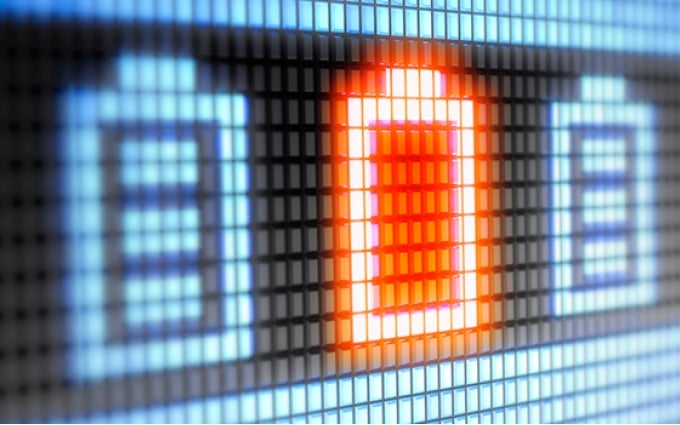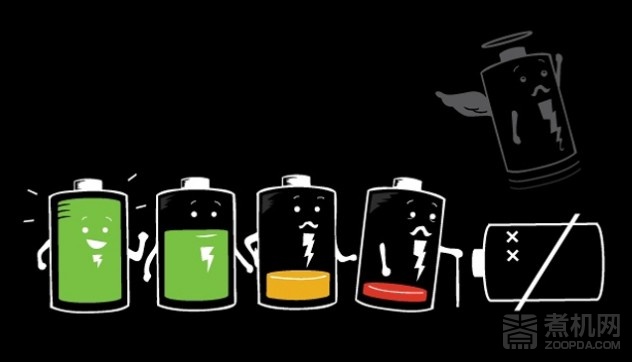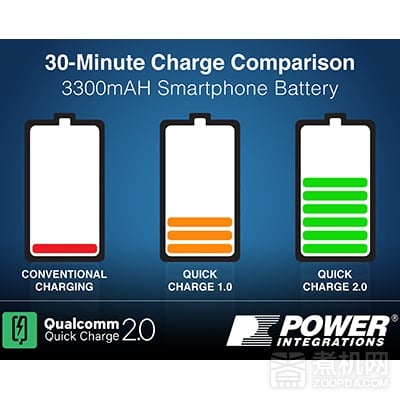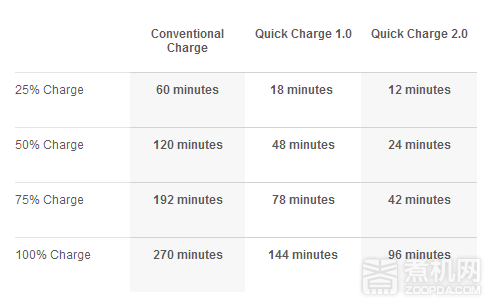In recent years, the development of battery technology did not keep up with the pace of improved mobile performance. Bio-batteries that fuel these products are still currently in the research state. Currently, they still rely on increased cell volume to increase the battery’s capacity.
However, the battery capacity increases brought about the increase in charging time becoming longer. Standard charging current also increases the mainstream charging current from 600mA up to now 1A ~ 1.2A, which has now nearly doubled. This has happened because of different battery capacities, using the same charger, compared to iPhone and Android machines, tend to spend more time charging.
Quicker charging rates will rise to two major problems: heat and reduction of the battery’s charging life. However, this makes the charging rate less than 50% its residual capacity. At least one hour before the machine can be more than 50% of the electrical impulse. Manufacturers are beginning to think of new ways to solve this ongoing and serious problem.
Tip: The charging speed can be roughly calculated by: the Battery capacity / charging current. Analogy, a 2500mAh battery can be translated into 2.5Ah. If the charging current is 1A, then the charging time is 2.5Ah/1A = 2.5h, which is 2.5 hours. In fact, because the output of the charger is often less than the nominal value and the final process factors such as trickle charging, charging time takes longer than the theoretical time states.
Qualcomm Quick Charge (referred to as QC)
In order to improve the charging speed, Qualcomm launched its QC1.0 technology to meet the Qualcomm chipsets and with a specific core premise of the largest mobile phone can accept a 5V 2A input, so that the charging speed is greatly improved.
Followed by the launch of QC2.0 technology, Xiaolong 800 helped to improve the CPU time and with the appropriate power management chip, phones can accept a maximum input of 12V 2A. By increasing the output power, it helps to increase the charge rate. However, the high-pass technique does not give details on how to control the temperature and the battery life.
Qualcomm test machine battery is 3300mAh. Normal charge that is used is a 5V 1A input. QC1.0 uses a 5V 2A input and QC 2.0 uses a 9V 2A input.
So far, although there have been numerous phone hardware models supporting Qualcomm’s QC2.0 technology, including the HTC One (M8), 3 Unicom version of millet, etc., the charger side cannot support QC2.0 charger. While Qualcomm QC has had excellent performance in the engineering prototype, on the practical application side, due to the lack of matching charger it is not strong enough to do well in the market.
OPPO flashing technology
There is another company in the quick charge technology business that is out of the practical first step. The high-pass type, Oppo used its technology to increase the charging current, which also helped to the increase the charging power. Thus, this also increases the charge rate of the battery. Qualcomm’s technology is a combination of Oppo technology, but is self developed.
Oppo flash technology (through extra battery contacts for charging batteries in parallel) can be understood as a simple point. Typically, it flashes while the battery is charging which reduces the battery charge in a current single block. It has been designed to extend the battery’s life. Thanks to Oppo’s good relations with upstream manufacturers, the battery and the charger are individually customized, so that the battery can withstand relatively large current inputs.
Judging from the appearance, Oppo has made improvements to increase the charging port for charging and for battery contacts. The PR manager of Oppo has confirmed some of the details of the technical aspects of their technology.
After completing some battery tests, thanks to this new technology, we find that the battery’s heat levels, during the charging process, is in a controllable and appropriate range.
At room temperature, at approximately 25 degrees in the environment, it will act normal. It will flash red during the maximum temperature if it exceeds 35 degrees, a temperature slightly higher than that of ordinary batteries. However, in the hot and humid southern summers, the temperature of the battery is still a cause for concern. If the thermal environment is not very good and with the high temperature of the battery, the battery’s life will still be impacted.
Furthermore, since the output power is relatively large, the charger is not as graceful looking as any other brand charger is. It currently is close to the size of a portable wireless router. In order to charge to necessary speed and volume it is understandable. After all, there is no charger technology that can reduce the volume.
Summary
In the category of quick charge, Qualcomm have already set the standard for mobile phone products that have hardware support, but did not push for QC2.0 support parts from manufacturers for its long term large-scale practical stance.
Compared to Qualcomm, Oppo already have practical products and have successfully extended it to a certain extent on energy. We hope that this innovation can help improve battery life around the whole world.












